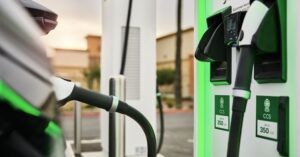With its promises of renewable energy, solar power, and windmills, the green energy movement is facing yet another setback. The idea of a future powered by green energy is still a long way off, even with Congress having set aside billions for infrastructure construction. Nevertheless, the left has continued to advance its climate agenda, with electric vehicles (EVs) at the center. Although Americans have been hesitant to accept plug-in vehicles and trucks, the Biden Administration has made the adoption of EVs mandatory.

This reluctance is caused by a number of factors, including as the expensive cost of EVs, their variable performance, their short range, technical problems, and supply chain disruptions. Furthermore, since EVs have had difficulty taking off in the market, many American buyers just prefer gasoline-powered cars. Due to unsold inventory resulting from slow sales, a group of dealers has asked for a brief suspension of the push for electric vehicles.
But range is the main factor causing hesitancy among consumers. The convenience required for road trips or family vacations is not always provided by even the models with the greatest promised range, which frequently requires numerous charging stops. The public’s continued reliance on dependable gasoline-powered vehicles is exacerbated by the disparity between promised range and actual performance.
The main obstacle to the general adoption of EVs has been the absence of a large-scale EV-capable charging infrastructure. Congress set aside a sizeable $7.5 billion in 2021 to create a countrywide network of charging stations. But as of right now, not a single charger has been constructed using those monies.
Politico claims that out of the 180,000 charging stations in the US, only 41,000 have fast chargers at the moment. In order to fulfill the projected requirement of 1.2 million public chargers by 2030, which includes 182,000 fast chargers, fewer than half of the states have started the contractor bidding process. While states and the charging industry place the finger upon contractors and regulatory roadblocks, Democrats blame Republicans for the delays.
Five billion of the allotted cash will be used to build fast chargers every fifty miles on the nation’s interstate system. It is anticipated that these chargers will have a 97 percent uptime rate and accept payments via card readers. But the long-term upkeep and operation of such a large network are still unknown, which runs the danger of leaving numerous drivers without a charge stranded.
Democrats worry that the GOP will use the sluggish pace of infrastructure building as a source of contention in the 2017 elections. When he spoke with the United Auto Workers, former President Donald Trump reiterated the public’s concerns, saying that worry over charging availability soon overshadows the initial exhilaration of having an EV.
Many customers who are still hesitant to rely just on wires and plugs to keep their cars running are represented in Trump’s evaluation. Before EVs to live up to the hype, a number of difficulties need to be resolved, such as range restrictions, safety concerns, and cost concerns. Maybe it would be more practical to offer EVs as options to mandates, especially in light of the delayed development of the infrastructure for charging them.
In conclusion, there are still many challenges in the way of an EV-dominated future. It might take years before consumers completely accept electric vehicles as the charging infrastructure fails to keep up with the strong drive for EVs.





